Neck Lift in Japan
Search and Compare the Best Clinics and Doctors at the Lowest Prices for Neck Lift in Japan

Find the best clinics for Neck Lift in Japan
No clinics available
Thailand offers the best prices Worldwide
Price: $ 275

- Home
- Japan
Compare Before & After Photos of _procedure_photos.phpNeck Lift
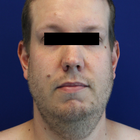

Front view
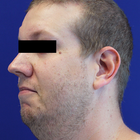
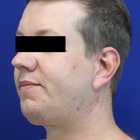
Half-side view
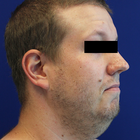

Full-side view
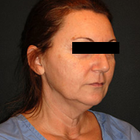
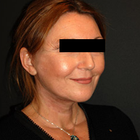
Half-side view
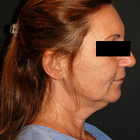
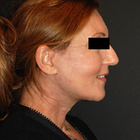
Full-side view
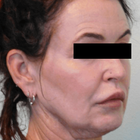
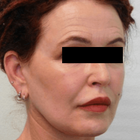
Half-side view
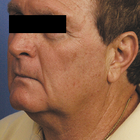
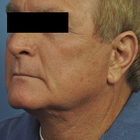
Half-side view
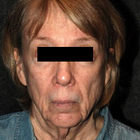
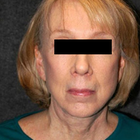
Front view
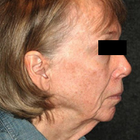
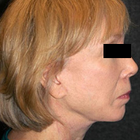
Full-side view
WHY US?
At Medijump, we're making medical easy. You can search, compare, discuss, and book your medical all in one place. We open the door to the best medical providers worldwide, saving you time and energy along the way, and it's all for FREE, no hidden fees, and no price markups guaranteed. So what are you waiting for?

Free

Best Price

Widest Selection

Risk-Free
What you need to know about Neck Lift in Japan

Aging is inevitable as you grow older, the good news is that technological advancements in the medical field have now found exemplary ways to slow down the aging process.
Over time, we lose our youthful contours in our faces and down our necks and these changes in our facial features could be due to old age, gravity, stress, environmental conditions or most likely a combination of all these factors.
A full facelift is usually one solution to rejuvenate your youthful look. However, there are cases whereby a patient’s upper facial area still displays a youthful look but excess wrinkling on the neck’s skin and a double chin are apparent. If your neck area doesn’t align with your upper facial appearance, then undergoing a neck lift might be a solution for you.
A Neck Lift, or its technical term Lower Rhytidectomy, is a cosmetic surgical procedure that enhances visible signs of ageing in your jawline and down your neck. The procedure might be performed on its own or as a part of a facelift.
What does a Neck Lift Procedure Involve?
A neck lift is usually a set of procedures to improve the lower part of your face and is typically done as a part of a facelift. Furthermore, this type of treatment procedure can also treat:
- Jowls - excess fat in the lower face
- Double chin or Turkey wattle - excess fat under the chin
- Loose skin on the neck
- Muscle banding in the neck - creates abnormal lower facial contours
The first step before undergoing the procedure is to consult with your surgeon. It is important that you discuss everything with your surgeon and fully understand the procedure and the result. You should also explore all of your options and alternatives. Keep in mind that a neck lift will not change your fundamental appearance nor will it stop your aging process.
While everyone has the possibility to undergo this type of treatment procedure, the perfect candidates for a neck lift are:
- Nonsmokers
- Individuals who do not have medical conditions that could possibly impair healing
- People with realistic expectations and a positive outlook
During your consultation, your surgeon will also:
- Discuss the type of anesthesia that will be used during the surgery
- Evaluate your general health, as well as any pre-existing health conditions
- Discuss other optional alternatives for the procedure
- Examine and measure your face
- Discuss possible outcomes of the procedure as well as potential risks and complications
In preparation for a neck lift treatment procedure, you may be advised to do the following:
- Avoid certain medications and supplements before your surgery and doing so may reduce the risk of excessive bleeding during the surgery.
- If you smoke, you will need to stop smoking four weeks before and four weeks after your surgery as it is necessary to aid the healing process.
- Eat a healthy diet
On the day of your scheduled surgery, it is advisable that you wear loose and comfortable clothing. Wear a type of clothing that you will not need to pull over your head and neck. In terms of anaesthetics, you may opt for sedation and local anaesthesia or go under general anaesthesia.
During your surgery, if minimal contouring is needed, it can be done with liposuction alone. As for a full neck lift procedure, incisions may be done either under your chin or behind your ears. These incisions will be closed with sutures and drains may also be placed before your wounds are bandaged.
How Long Should I Stay in Japan for a Neck Lift Procedure?
A neck lift is an outpatient surgical procedure, however, you also have the option to stay overnight in the hospital. You should remain in the Japan for at least 4-5 days after the surgery as there will be scheduled follow-up check-ups with your surgeon to monitor your healing. The sutures will need to be removed after a few days.
What's the Recovery Time for Neck Lift Procedures in Japan?
Typically, most people are able to return back to work in ten to fourteen days. In terms of having a physically active lifestyle like playing sports or exercise, you will need to wait at least three weeks or when your doctor gives you the all-clear.
What sort of Aftercare is Required for Neck Lift Procedures in Japan?
Note that it will most likely take several weeks to a couple of months for the swelling to fully disappear. You will be given specific instructions as to how to take care of your surgical site and drains, as well as medications to apply or take orally to help with your healing and to reduce the risk of infections. It is very important that you give yourself ample time to heal to get the most benefit from your treatment procedure.
What's the Success Rate of Neck Lift Procedures in Japan?
Results for neck lift surgery are normally long-lasting. In general, patients who have gone through a neck lift surgery have been very satisfied with the results.
Although possible risks and complications with this type of procedure are rare and if you experience any of the following symptoms, you will need to consult with your doctor immediately.
- Infection and bleeding
- Adverse reaction to anesthesia
- Scarring
- Allergic reaction
- Changes in sensation
- Hematoma or seroma
- Numbness and tightness in the neck area
Are there Alternatives to Neck Lift Procedures in Japan?
For those who are not a fan of surgery, there are non-surgical alternatives that are now available to help you enhance your facial appearance:
- Botox neck lifts - a non-surgical lift that tightens your neck muscles. Botox will be injected into the platysmal bands of your neck. Result typically lasts for three to four months and a touch-up treatment will be required.
- Thermage - also a non-invasive radiofrequency treatment procedure that smoothens and tightens the contours of your neck area, giving you a younger-looking appearance. This procedure can also be used to tighten your sagging stomach, knees, legs, butt, and arm skin.
- Ultherapy - by using ultrasound technology, this type of non-surgical treatment procedure can lift and tighten your loose skin, the result is usually visible in just one treatment.
Whilst the information presented here has been accurately sourced and verified by a medical professional for its accuracy, it is still advised to consult with your doctor before pursuing a medical treatment at one of the listed medical providers
No Time?
Tell us what you're looking for and we'll reachout to the top clinics all at once
Enquire Now

Popular Procedures in Japan
Prices Start From $28

Prices Start From $1,945

Prices Start From $167

Prices Start From $672

Recommended Medical Centers in Japan for procedures similar to Neck Lift

- Interpreter services
- Translation service
- Religious facilities
- Medical records transfer
- Medical travel insurance
- Health insurance coordination
- TV in the room
- Safe in the room
- Phone in the room
- Private rooms for patients available

- Interpreter services
- Translation service
- Religious facilities
- Medical records transfer
- Medical travel insurance
- Health insurance coordination
- TV in the room
- Safe in the room
- Phone in the room
- Private rooms for patients available

- Interpreter services
- Translation service
- Religious facilities
- Medical records transfer
- Medical travel insurance
- Health insurance coordination
- TV in the room
- Safe in the room
- Phone in the room
- Private rooms for patients available

- Interpreter services
- Translation service
- Religious facilities
- Medical records transfer
- Medical travel insurance
- Health insurance coordination
- TV in the room
- Safe in the room
- Phone in the room
- Private rooms for patients available
Neck Lift in and around Japan
About Japan
Japan is special in its own way; the culture, food, people, as well as technology are envied by the world over. With old Japan, comes the ancient tradition in the form of a geisha performance, onsen (hot spring) visit in the mountains, tea ceremony, or shrine visit. In contrast, there is modern Japan, full of smart systems and electronics, colorful advertisements and displays, and ultra-modern architecture. In recent years, Japan has become one of the top destinations in the world for oncology treatments and sees many tens of thousands of medical tourists each year. Many of these travel from within the region, including China and Korea, but they are unable to compete with the SE Asian nations with prices. Private hospitals are located across the country, with a particular focus in major cities like Tokyo, Kyoto, and Osaka. 25 of these facilities are JCI-accredited, with many offering Neck Lift procedures.
Popular Parts of Japan
Located in the Pacific Ocean, Japan is a stratovolcano archipelago. The four largest islands are Honshu, Hokkaido, Kyushu, and Shikoku. With a population of 127 million, 98% are ethnic Japanese. The country perfectly balances traditional with modern technology. Tourists will first see its exceptionally modern face, but after traveling around, they will find many opportunities to connect with the beautiful traditional culture.
- Tokyo is Japan’s capital, one of the 47 prefectures of Japan. It’s a huge metropolis that offers traditional arts and culture, futuristic infrastructures, and good restaurants. The cherry blossoms that bloom in Spring is one of the most popular sights. The soft pink petals are an icon of the country. There is an unlimited choice of shopping, many museums that cover every era of Japanese art history, and even a robot restaurant.
- Kyoto is made of religious architecture, with around 2000 temples and shrines. It moves at a slower pace than any other city in Japan. Filled with samurais, geishas, Zen gardens, and the torii gate, Kyoto is the spiritual center of Japan. The city is also known for its food, head to the Nishiki Market, a four-hundred-year-old local food market that offers a range of national cuisine to modern food from all over the world.
- Osaka, the second largest metropolitan area after Tokyo is known to be the most delicious city. The city is nicknamed “the nation’s kitchen.” Visit Dotonburi to experience the food culture of Osaka. Besides the food, there are numerous attractions that tourists should visit such as Universal Studios Japan, Cup Noodles Museum, Aquarium Kaiyukan, Osaka Castle, and Umeda Sky Building.
- Fukuoka has a welcoming feel with sunny weather and so much to do. It’s made up of two towns, the port city of Hakata and the former castle town of Fukuoka. Visit the impressive Fukuoka Castle, explore the Sumiyoshi-Jinja Shrine, learn history in Kyūshū National Museum, experience the ancient art of calligraphy and origami in Hakata Machiya Folk Museum, and enjoy a calming bath in one of the Onsen hot springs.
- Nagoya is the industrial center of Japan. It’s the birthplace of Toyota and a popular pinball-style game Pachinko. Although many of the historic buildings were destroyed in the air raids of 1945, tourists can still indulge in its culture and tradition. Visit the Nagoya Castle that was reconstructed in 1959, walk around the Atsuta Shrine, or see the history of the automobile in the Toyota Automobile Museum.
Weather and Climate in Japan
Japan has four distinct seasons.
- Summer starts in June and lasts until August. The temperature can get very hot, up to 40 °C in some places, with high humidity. June is the rainy season where the farmers plant their rice. The rainy season is over in August but the typhoon season starts to peak.
- Autumn starts in September and ends in November. September has the greatest risk of typhoons. The weather is generally mild. October is pleasantly warm with less humidity than in summer, making it a food time for traveling the country.
- The temperature will drop in Winter. It lasts from December to February and is usually dry, pleasant, and sunny. The average temperature is around 2°C to 12°C, it rarely drops below 0°C. The northern island of Hokkaido, the Japan Alps, and the Japan Sea coast get a lot of snow while Tokyo gets very little snow.
- Spring is said to be the best time to visit Japan because of its mild weather and cherry blossoms. The season starts in March and ends in May. The temperature will gradually increase during spring with little rainfall and clear sky.
Getting Around in Japan
The main airport for international tourists is the Narita International Airport. It is located around 60km east of central Tokyo. It serves both domestic and international flights to almost every major city around the globe. There are several budget airlines that operate flights from this airport, namely Jetstar Japan, Eastar Jet, and Peach. There are other international airports such as Kansai International Airport, New Chitose International Airport, and Kyushu Saga International Airport.
To get to Tokyo from Narita Airport, tourists can use the rail, bus, taxi, or car rental. The most affordable train line is the Keisei Line that connects with the Toei Asakusa Subway Line and the Yamanote Line, it costs around ¥1,190 to ¥1,230 ($10 to $11.3). There’s also the Sky Access Express train that offers better access to Tokyo, a trip to Asakusa will cost around ¥1,290 ($11.9) and take about 58 minutes. The quickest way to get to Tokyo will be by the Skyliner train, it takes just 36 minutes to Nippori and will cost around ¥2,470 ($22.7). The airport introduced N’EX Tokyo Round-Trip ticket for foreign passport holders that provides round-trip travel from Narita to Tokyo and back for ¥4,000 ($37) for adults and ¥2,000 ($18.4) for children.
A regular taxi from Narita to Tokyo is very expensive, usually over ¥20,000 ($184). The best option is the shared minibus that starts with ¥6,180 ($57) per person. Buses are usually more affordable, the Limousine Bus costs ¥2,880 ($26.5) and the Tokyo Shuttle costs around ¥900 ($8) to ¥1,000 ($9).
Getting around Japan is fairly easy because the country has excellent public transportation. It is recommended to get a Japan Rail Pass. Japan’s bullet train is fast but expensive. There are cheaper train options. Buses are less expensive but will take more time than trains.
Tourist Visas in Japan
Citizens of 68 countries and territories can enter and stay in Japan for up to 90 days without a visa. Citizens of Indonesia, Brunei, and Thailand are granted a 15-day visa-free trip to Japan. Citizens of the United Arab Emirates are allowed to stay for 30 days without a visa. It is advisable to contact the nearest Consular Section of the Embassy or Consulate General of Japan for more information.
Additional Information
- Local Currency: Yen (¥) is the local currency. $1 will get you ¥11 ¥1,000 is worth approximately $9.
- Money & Payments: ATMs are usually located in post offices and convenient stores. There are only a few branches of major Japanese banks that accept foreign-issued cards. Credit cards are accepted in major cities, but the rural area doesn’t. It’s best to always bring cash and bring a coin purse because everything below ¥500 is coins. Tipping is not mandatory, high-end hotels and restaurants usually add a 10% service fee to the bill.
- Local Language: The official language is Japanese. English is common in major cities with many tourists such as Tokyo, Osaka, and Tokyo. Some restaurants write their menu in English and Japanese.
- Local Culture and Religion: The dominant religion in Japan is Shinto and Buddhism. There’s a small group of Christians as well.
- Public Holidays: Japan has sixteen national holidays each year, including Children’s Day, Constitution Memorial Day, and Marine Day. The country hosts numerous annual festivals such as Gion Matsuri in Kyoto, Awa Odori in Tokushima, and Yuki Matsuri Snow Festival in Sapporo.
Popular Searches
- Plastic Surgery in Thailand
- Dental Implants in Thailand
- Hair Transplant in Thailand
- Breast Augmentation Thailand
- Gastric Sleeve in Thailand
- Gender Reassignment Surgery in Thailand
- Laser Hair Removal in Bangkok
- Botox in Bangkok
- Dermatology in Bangkok
- Breast Augmentation in Bangkok
- Coolsculpting in Bangkok
- Veneers in Turkey
- Hair Transplant in Turkey
- Rhinoplasty in Turkey
- Stem Cell Therapy in Mexico
- Rhinoplasty in Mexico
- Liposuction in Mexico
- Coolsculpting in Tijuana
- Rhinoplasty in Korea
- Scar Removal in Korea
- Gastric Sleeve in Turkey
- Bone Marrow Transplant in India
- Invisalign in Malaysia
- Plastic Surgery in the Dominican Republic
- Tummy Tuck in the Dominican Republic
- Plastic and Cosmetic Surgery in Poland
- Rhinoplasty in Poland
- Hair Implant in Poland
- Dental Implants in Poland
- IVF in Turkey